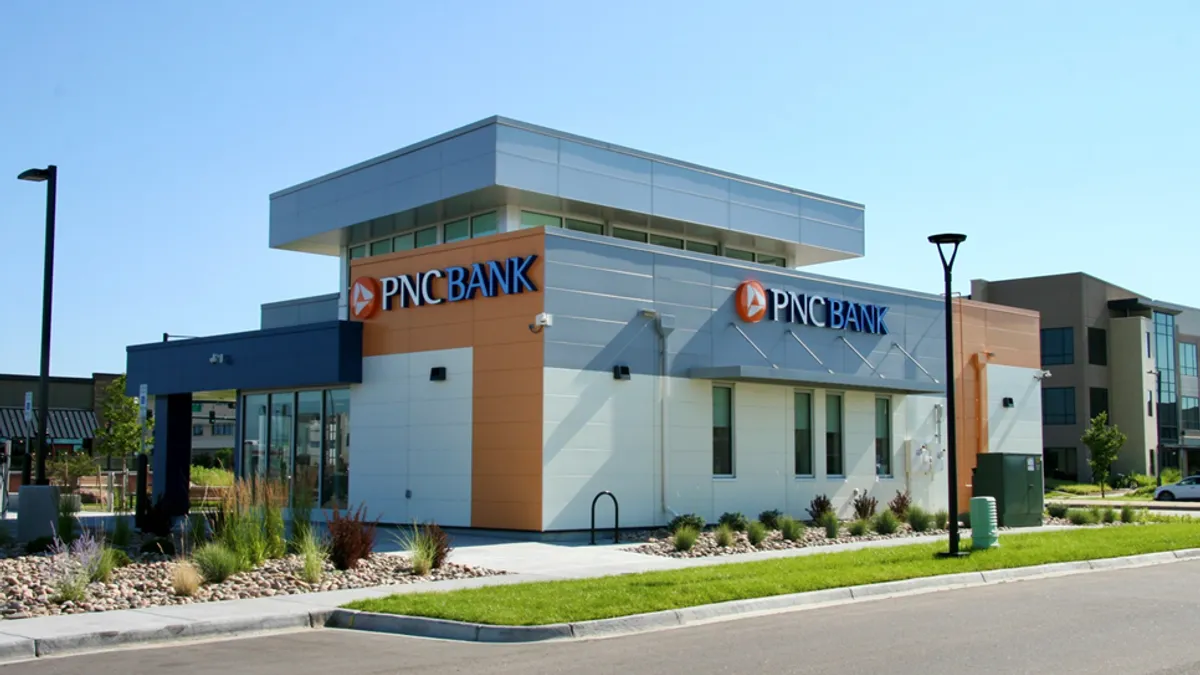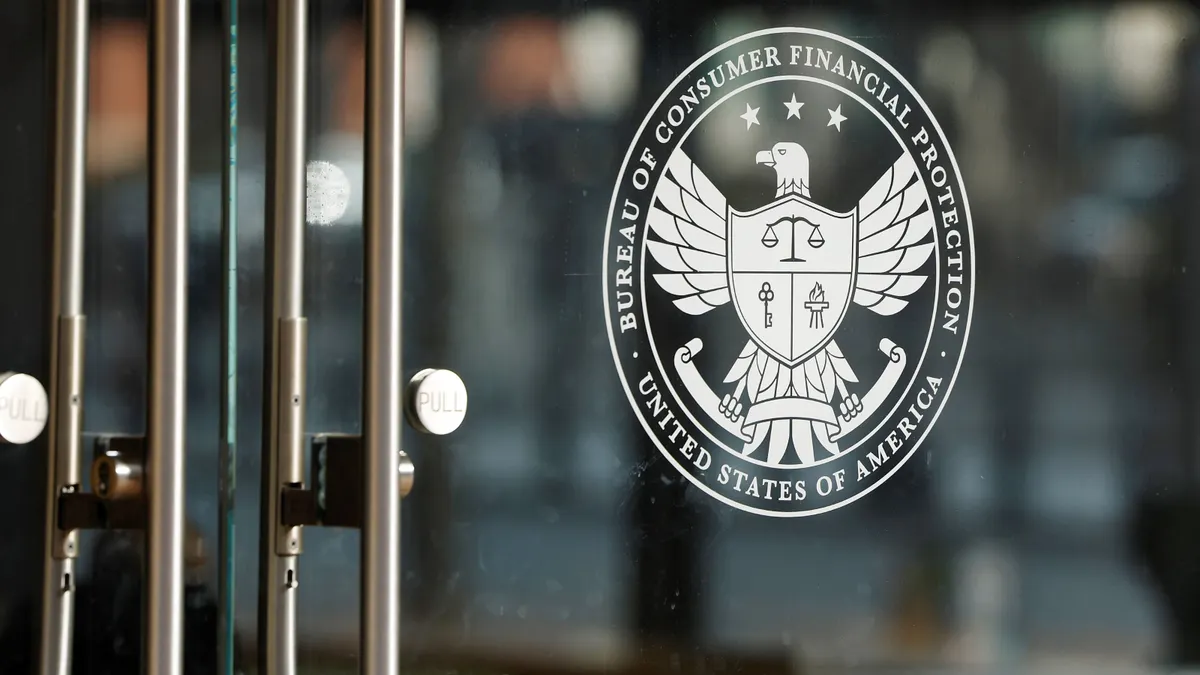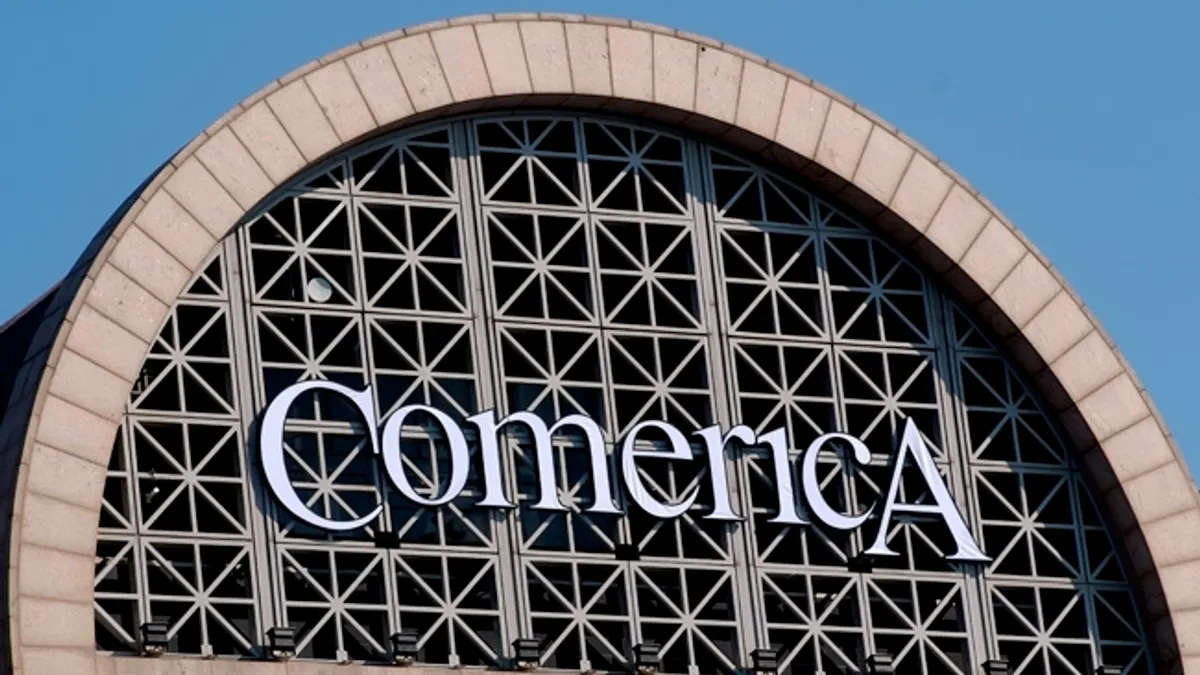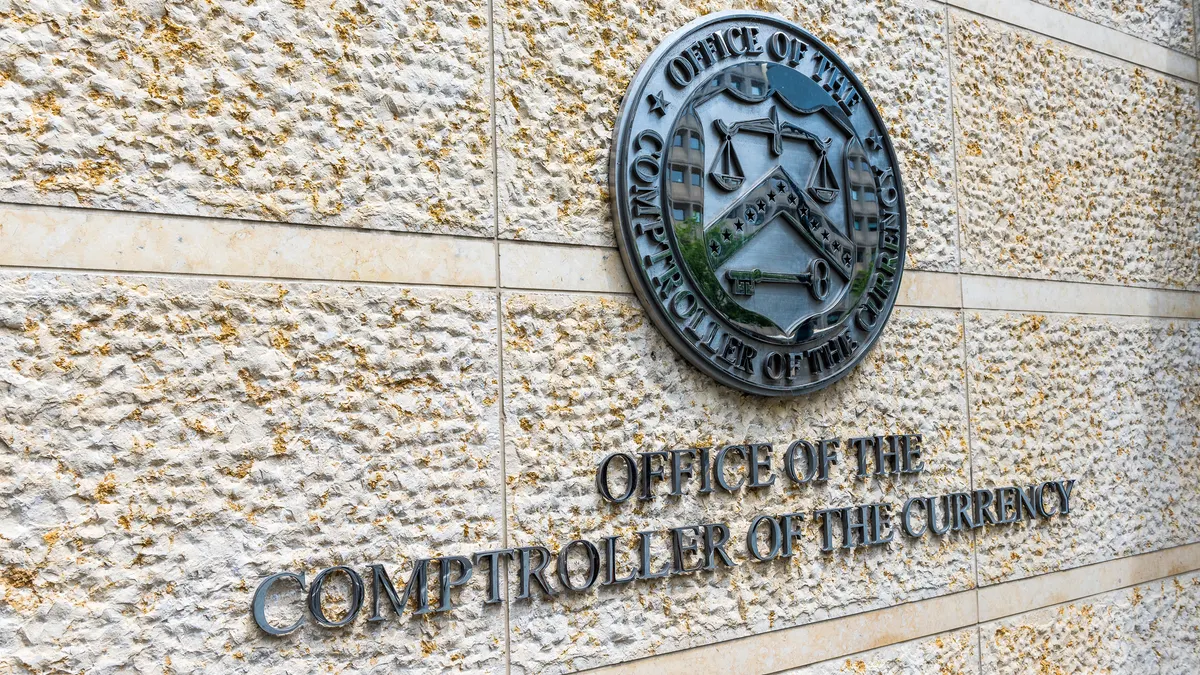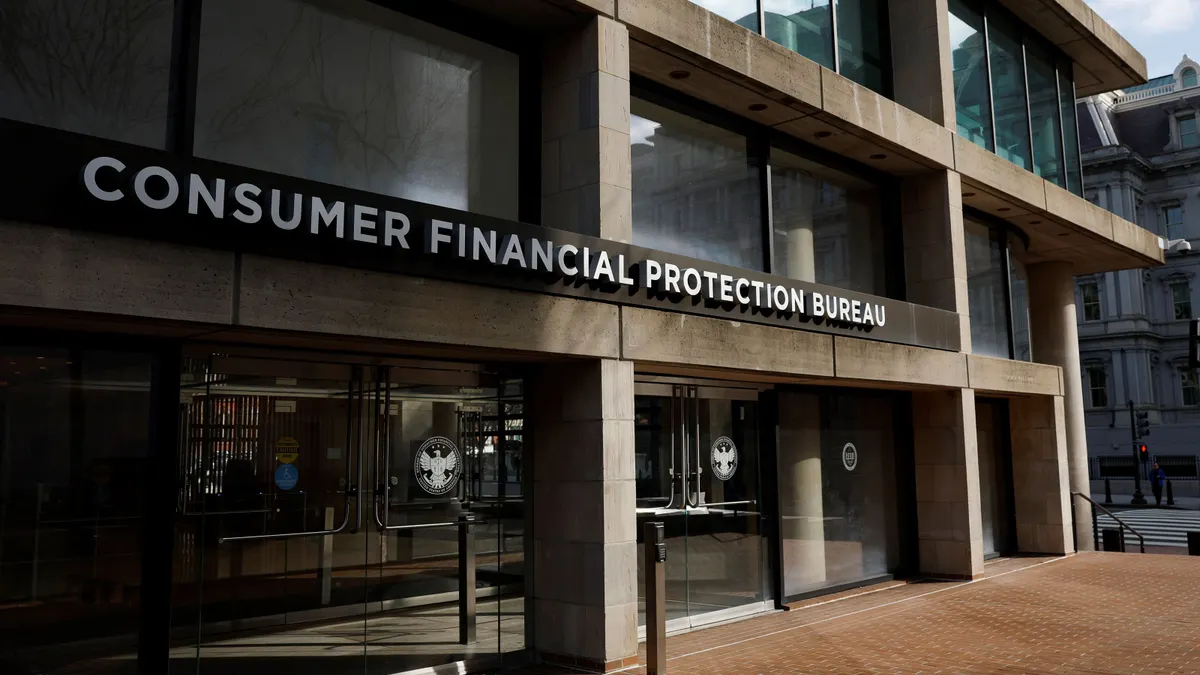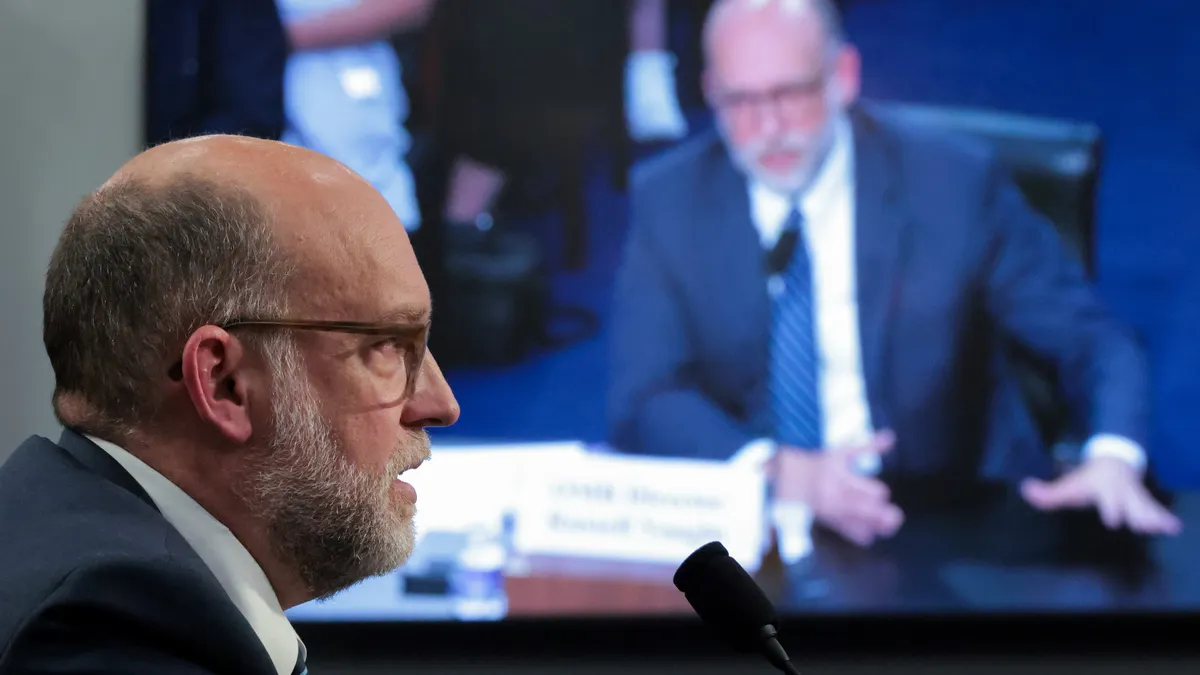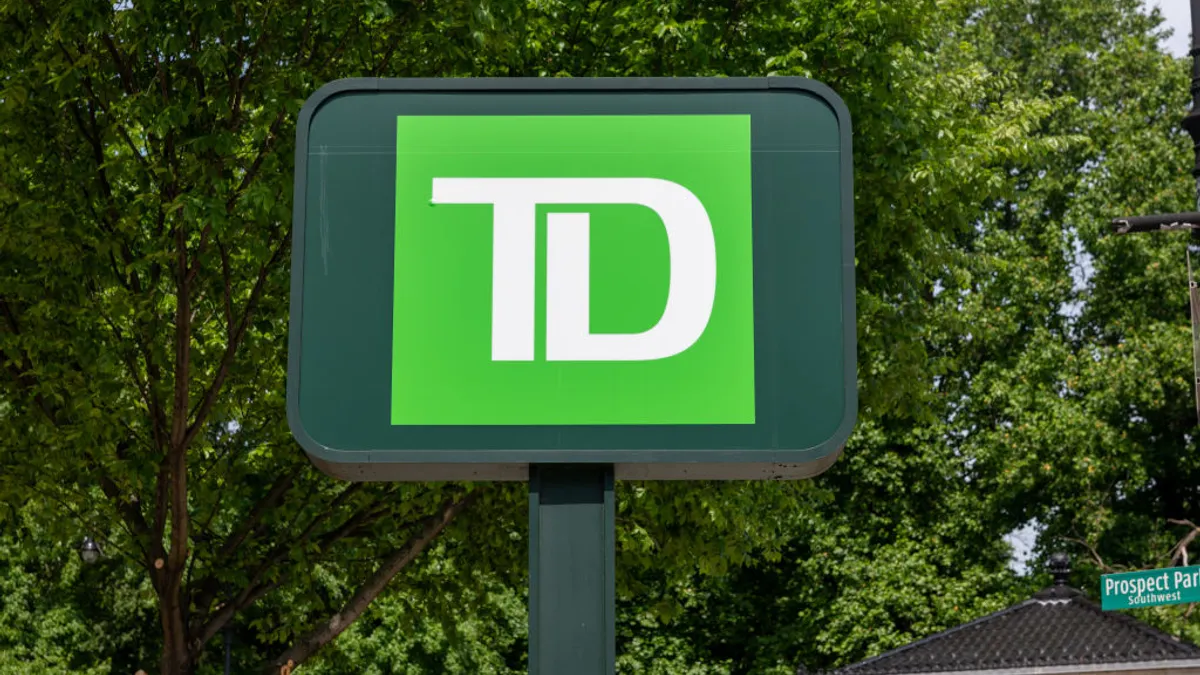The Federal Deposit Insurance Corp., Office of the Comptroller of the Currency and Federal Reserve finalized a rule Tuesday reducing tier 1 capital requirements for global systemically important banks by less than 2% – or about $13 billion in aggregate.
Those companies’ depository institution subsidiaries, however, would see a 28% cut, on average, to required holdings, according to an FDIC memo.
That’s in line with a proposal the Fed issued in June – though Tuesday’s changes are arguably more robust.
The final rule trims the enhanced supplementary leverage ratio – a measure of how much capital banks must hold relative to their assets – to 3% for bank holding companies, plus half of a firm's Method 1 GSIB surcharge. That’s down from 5%.
For bank subsidiaries, the eSLR will drop to 4% from 6%. The June proposal, by comparison, would have brought the eSLR to between 3.5% and 4.5% for holding companies and their bank subsidiaries.
Tuesday’s rule is set to take effect April 1, though banks can choose to voluntarily comply by Jan. 1, the FDIC said.
The eSLR sets capital requirements without regard to the risk level of particular assets. Some lawmakers and regulators have said the current setup leaves banks little incentive to participate in low-risk, low-return activities, such as facilitating Treasury market trading, specifically in times of stress.
Tuesday’s rule “help[s] ensure that the eSLR more frequently serves as a backstop to risk-based capital requirements, rather than as a binding constraint," Travis Hill, the FDIC’s acting chair, said Tuesday.
The new final rule converts the eSLR for depositories from a prompt corrective action threshold to a leverage buffer, meaning complying with the measure won't affect a bank’s "well capitalized" designation.
Support for the eSLR final rule was unanimous at the FDIC and OCC, but not at the Fed, where the measure passed 5-2.
"I am sympathetic to the rule's recalibration of the eSLR at the holding-company level," Fed Gov. Lisa Cook wrote in a statement explaining her vote against the rule. "[But] we should carefully consider the implications of capital flowing out of GSIB bank subsidiaries.”
Bank-level capital “remains fundamental to maintaining bank-level solvency and protecting the depository insurance fund,” Cook argued, adding a warning.
“A series of well-intended, individually reasonable actions can nevertheless result in disproportionately large reductions in overall capital that can reduce the resilience of the system,” she said.
At least one regulatory official, Fed Gov. Stephen Miran, voted for the measure but advocated for removing Treasury and repo trading books from the ratio, arguing that “would also help insulate the Treasury market from stressful episodes."
One prominent lawmaker, however, said the development “set[s] the stage for more Wall Street bailouts and devastating financial crashes.”
“Banking regulators just gave megabanks the green light to load up on more debt and operate with even thinner financial cushions – putting the entire economy at risk, Sen. Elizabeth Warren, D-MA, said in a statement Tuesday.
Warren and 10 other Senate Democrats asked regulators in August for “more rigorous data and analysis” to help justify a reduction in the eSLR.
Community bank proposal
Separately Tuesday, the FDIC, Fed and OCC proposed reducing the community bank leverage ratio from 9% to 8% and extending – to a year – the grace period to comply, on the condition that a bank hasn't used the extension in more than eight of the past 20 quarters.
The agencies are looking to finalize the CBLR changes next summer and put a final rule into effect as early as Oct. 1.
Nonprofit Better Markets, in a statement Tuesday, noted that, in launching both actions, regulators put community banks on the losing end.
“While the agencies claim to be supporting community banks through the proposed reduction in the community bank leverage ratio capital requirement, they’ve still moved to implement a leverage requirement for the very largest banks,” said Phillip Basil, Better Markets’ director of economic growth and financial stability. “These actions worsen the already grossly unlevel playing field faced by community banks.”
As with the eSLR measure, the community bank rule drew at least one detractor.
"While the vast majority of community banks have traditional risk profiles, I'd be interested in understanding whether there are mechanisms to ensure that eligible banks with nontraditional, higher-risk profiles have capital requirements commensurate with their risk or should be excluded from eligibility," Fed Gov. Michael Barr wrote Tuesday. "It would also be helpful to have information about the risk profiles of firms that do and do not opt in to CBLR."
Independent Community Bankers of America CEO Rebeca Romero Rainey said the proposal would “provide community banks additional room on their balance sheets to meet the credit needs of their local communities to support ongoing economic growth.”
At least one analyst, Jaret Seiberg of TD Cowen, noted the eSLR change "bodes well for capital rule revisions that will be more material for mid-size and large banks including the forthcoming Basel III Endgame capital proposal and the expected revamp of the GSIB surcharge calculation."
Bank trade groups, too, appeared to embrace the measure, with Bank Policy Institute CEO Greg Baer, for one, calling it an "overdue reform.”
"It will improve market liquidity and banks' capacity to intermediate in Treasury and other capital markets, especially during stress," Baer said in a statement Tuesday. "This reform will leave banks exceedingly well capitalized.”
Financial Services Forum CEO Amanda Eversole, said the rule “empowers the nation’s largest banks to support critical financial markets and provide essential lending, while maintaining strength and resilience.”




